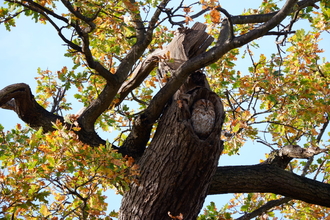Wolf spiders are found in a whole range of habitats including in gardens and get their name from their day time hunting techniques, pouncing on their prey like wolves. They are unlike many spiders as they don’t build webs.
Spiders are known to have complex mating rituals with many different variations between species. Wolf spiders opt for wooing females by drumming for them. They wave their mouth parts, otherwise known as palps, rhythmically drumming them on leaves in order to get the females attention. Once mated, the female will spin a sac from a silk producing organ called a spinneret carrying this and the eggs inside on her abdomen. The sac is carefully attached so that it doesn’t drag on the ground allowing the female to continue hunting. Once her spiderlings hatch they will crawl on top of legs to her back and ride in style as she carries them about until they are ready to venture out of their own. This behaviour is unique to wolf spiders and no other spider is known to give this type of parental care to their young. The spiderlings take about seven weeks to become independent and all this time the female will be continuing to hunt with her young hitching a ride on top. How’s that for love!
When not hunting, wolf spider can often be found sunning themselves or scuttling across garden paths, so why not see if you can spot any on the sunnier winter days this Christmas.










